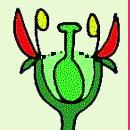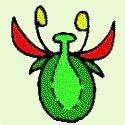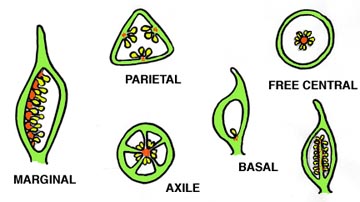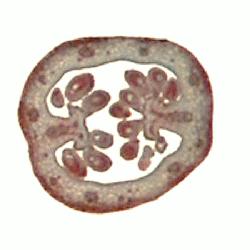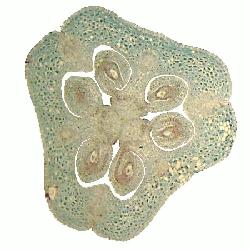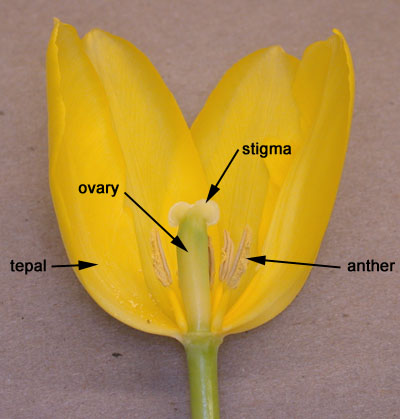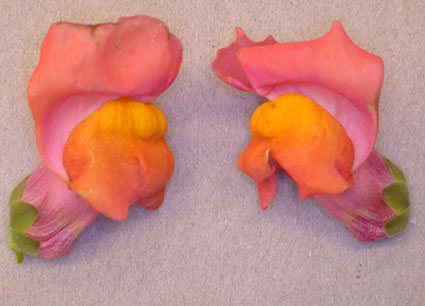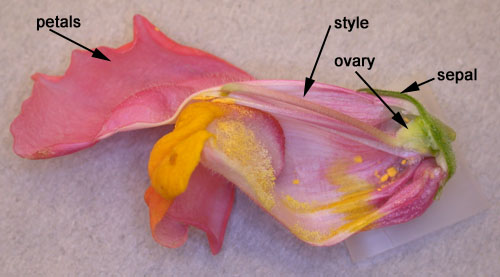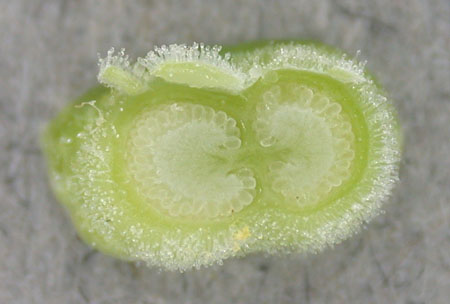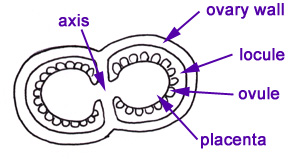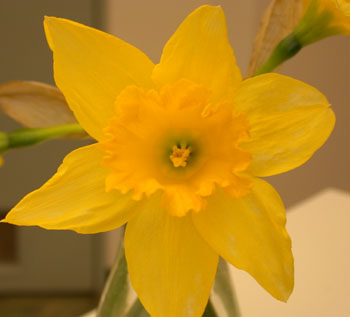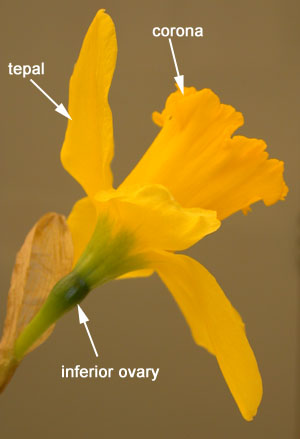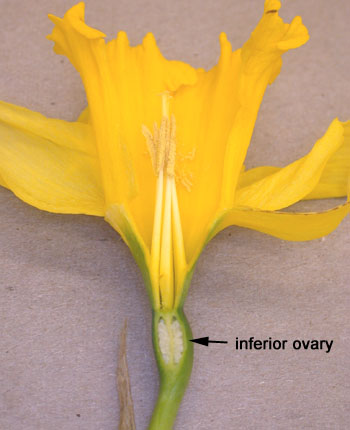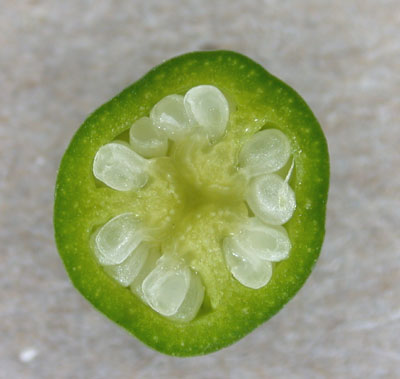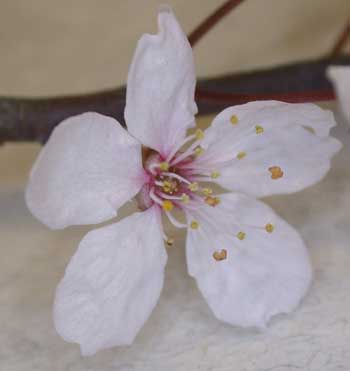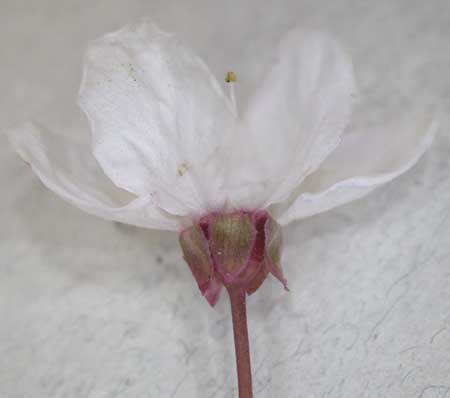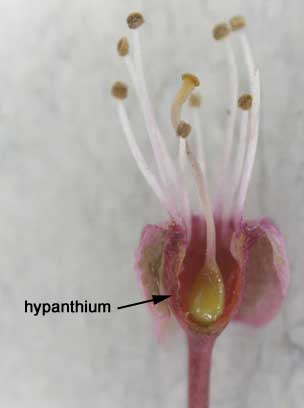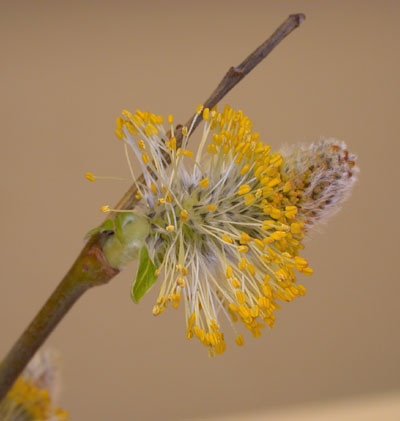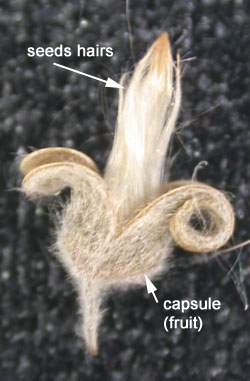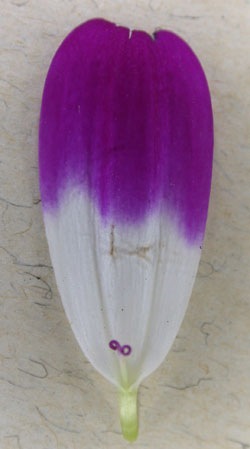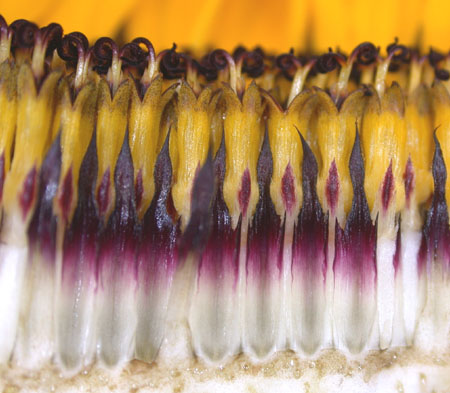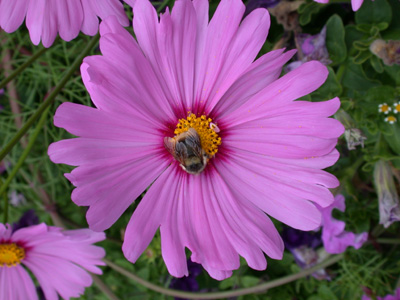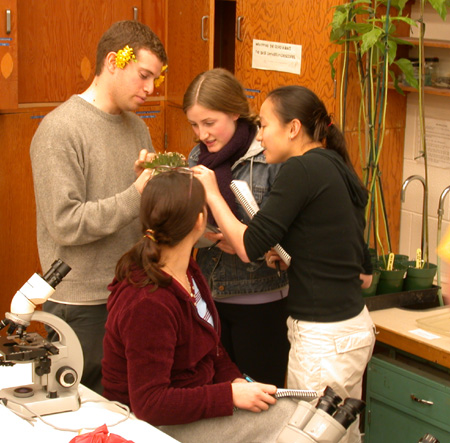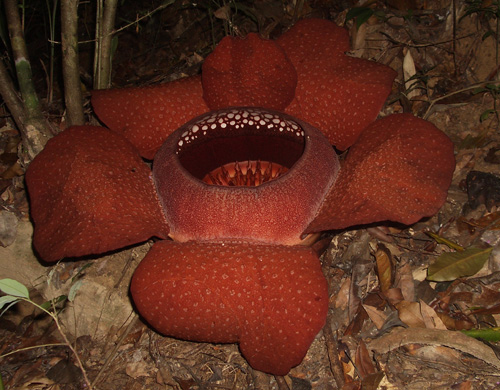3. FLOWERS OF SELECTED SPECIES
Oh great Caesar tell us more……
When examining a flower you will see that the flower parts can be arranged in different ways. Cut the flower in half longitudinal to see the position of the ovary relative to the other flower parts.
For floral types based on ovary insertion, a flower is said to be:
hypogynous, if sepals, petals and stamens are attached to the receptacle below the ovary. The ovary in this case is said to be superior. Examples from lab include the flowers of tomato, tulip, snapdragon, and Mimulus
perigynous, if sepals, petals and stamens are fused to form a cup-shaped structure called a hypanthium which is inserted beneath the ovary. The ovary in this case is still superior. You saw an example of this in lab (Prunus).
epigynous, if sepals, petals and stamens arise from the top of the ovary, or from a hypanthium inserted above the ovary. The ovary of an epigynous flower is inferior. An example from lab was the daffodil. The daffodil has a hypanthium as well.
Placentation refers to how the ovules are attached in the ovary. In lab we looked at two major types, but as you observed in the prepared slides there more types of attachment as you can see this little cartoon (you don’t have to know them all.
Parietal placentation is when the ovules are attached to the ovary wall, or to projections from the wall. How many locules do you see?
Axile placentation is when the ovules are attached to a central column in an ovary with more than one locule. How many locules do you see here?
Tulipa
You can see in this picture the different flower parts. The ovary is superior. The flower is hypogynous. The pistil of this flower has no style.
A closer look at the tulip.
Mimulus (monkey face)
The flower of this plant is bilaterally symmetric (= zygomorphic).
Antirrhinum (snapdragon)
– a profile view
– another zygomorphic flower.
This is a longitudinal section through the snapdragon flower. It has a superior ovary (hypogynous flower).
The cross-section through its ovary reveals that it has axile placentation. The pistil is made up of two carpels. You can see the many ovules.
By popular demand I have drawn a doodle to help you interpret the section above.
Narcissus (daffodil)
Note the bulge at the base of the flower; that is the inferior ovary.
A longitudinal section through the flower will confirm this. You can also see the other flower parts.
a cross-section thorugh the ovary of the daffodil shows you that it has axile placentation (and that it is made up of three carpels).
Prunus (cherry)
Cherry blossoms are a common sight this time of year.
The sideview of this flower:
The longitudinal section reveals that the ovary is superior. The flower has a hypanthium (a cup-shaped structure made up of fused sepals, sepals, and stamens.
Salix (willow)
You probably know this inflorescence as a pussy willow. This is a male catkin of willow (you can see the immature anthers). A catkin is an elongate structure which is made up of either carpellate or staminate flowers. Willows are therefore dieocious (male flowers and female flowers are on separate plants.
Here you can see the stamens mature and dangling from the catkin. There are two stamens per flower.
Another nice picture of a staminate catkin. The flowers do not have any sepals or petals. Dangling stamens like this usually indicate that the plant is wind-pollinated.
If it is wind pollinated then what is it doing with nectaries???????? Could it perhaps have two ways in which pollination can occur? Both wind and insects? It would appear so!
This is an immature carpellate catkin. You can see a wee pistil.
The fruit of Salix is not very appetizing. Each ovary develops into a capsule (dry type of fruit).
The structure you saw in the last slide is actually made up of a number of fruits. Here is one capsule removed. A very small seed would be found at the base of each of those seed hairs. How do you think the seeds are dispersed???
Cineraria
Cineraria is in the Asteraceae family. This is the largest of the plant family and is characterized by having heads of small flowers. In this example you can see there are two types of flowers. The flowers of the centre are very small. The ones that look like petals (to the un-botanical eye) are called ray flowers.
Here is a ray flower of Cineraria. You can see the stigma style peeping out.
Helianthus (sunflower)
Here is a look at the longitudinal section through the inflorescence. You can see it is made up many flowers as in the Cineraria….it is another composit-type of flower.
A closer look at the disk flowers.
A look at one disk flower:
Cosmos
– a favourite garden composit flower (Asteraceae).
Look at those flowers!!!!
This wonderful flower is Rafflesia kerrii. Shona saw this in the forest of Kao Sok (Thailand). It was quite a thrill as it is the second largest flower in the world. It is supposed to smell quite disgusting to attract flies as pollinators….Shona did stick her nose in the middle of it but alas…..it was just newly bloomed and had not yet begun to stench. Many thanks to Bill (in photo) for leading us.
Rafflesia is parasitic on lianas (vines). There is little morphological data to provide clues as to its relationship with other plants….that is, until recently where phylogenetic analysis using molecular information has indicated that it belongs in the Euphorbiaceae (family to which rubber trees and pointsettias belong). (Weblink to paper is posted).
Ahhhhhh…so many flowers….so little time!!!!!
2. DEVELOPMENT OF OVULE AND SEED
DEVELOPMENT OF FEMALE GAMETOPHYTE
3. FLOWERS OF SELECTED SPECIES
4. DEVELOPMENT OF THE FRUIT FROM THE FLOWER



